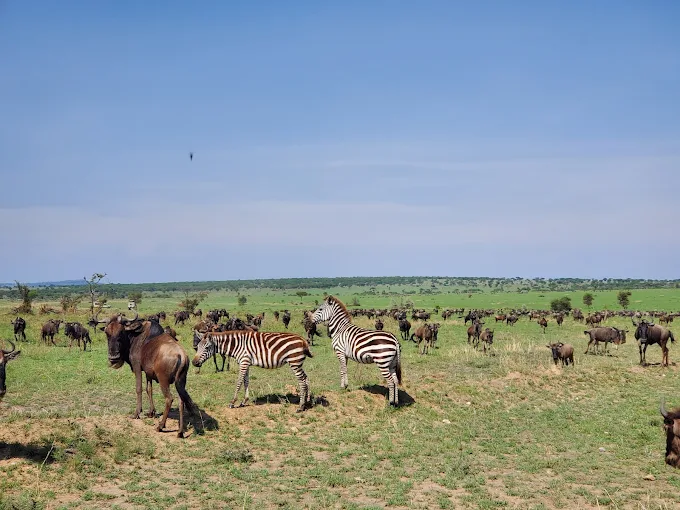Serengeti National Park is one of Africa’s most famous and important wildlife reserves. Located in northern Tanzania, it covers about 14,750 square kilometers (5,700 square miles) of savannah plains, woodlands, and riverine forests. The park is renowned worldwide for its vast and diverse wildlife populations, especially its annual migration of over 1.5 million wildebeest and hundreds of thousands of zebras and gazelles, often called the Great Migration. This event is one of the most spectacular natural wildlife phenomena on Earth.
Serengeti National Park is a UNESCO World Heritage Site and part of the larger Serengeti ecosystem that extends beyond the park’s borders. It provides critical habitat for many species, including lions, leopards, elephants, giraffes, cheetahs, buffalo, and hyenas, as well as numerous bird species.
The park is well known for its luxury lodges and safari camps that focus on eco-friendly tourism and wildlife conservation. It offers visitors opportunities for game drives, guided walking safaris, balloon safaris, and photographic safaris.
Serengeti’s conservation efforts are aimed at protecting its wildlife and natural habitats while supporting local communities. It is managed by Tanzania National Parks Authority (TANAPA), which enforces anti-poaching laws and promotes sustainable tourism practices.
Overall, Serengeti National Park is a top destination for travelers seeking authentic African wildlife experiences, blending natural beauty, biodiversity, and conservation leadership.







